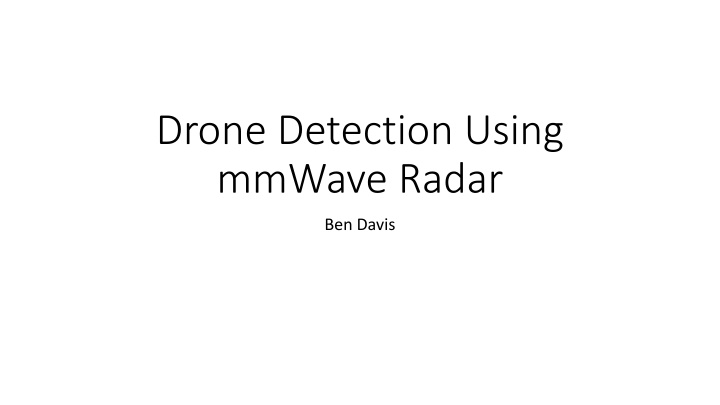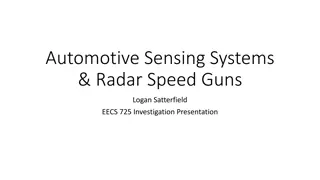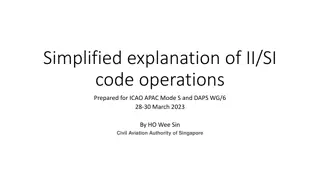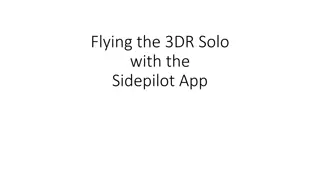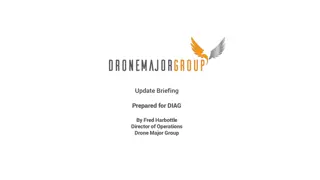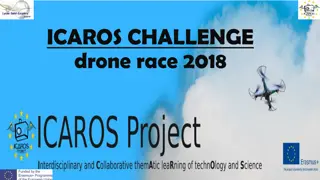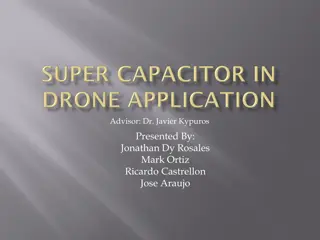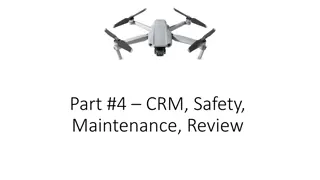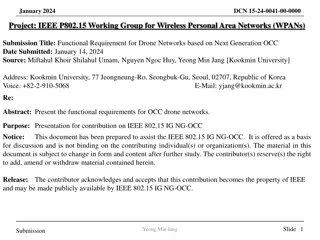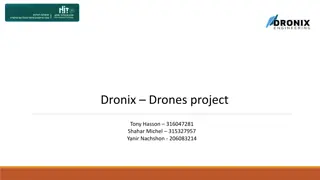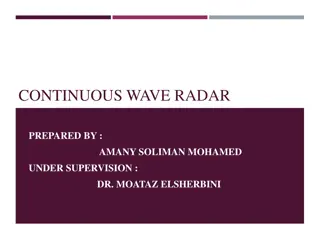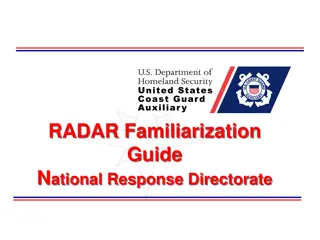Drone Detection Using mmWave Radar for Effective Surveillance
Utilizing mmWave radar technology for drone detection offers solutions to concerns such as surveillance, drug smuggling, hostile intent, and invasion of privacy. The compact and cost-effective mmWave radar systems enable efficient detection and classification of drones, including those with minimal Radar Cross Section (RCS) values. The IWR 1443 single-chip 76-81 GHz mmWave sensor provides a reliable solution with versatile capabilities for detecting drones in various scenarios. References to recent studies highlight the importance and effectiveness of mmWave radar in unmanned aircraft systems detection and localization, making it a valuable tool in ensuring security against potential drone-related threats.
Download Presentation

Please find below an Image/Link to download the presentation.
The content on the website is provided AS IS for your information and personal use only. It may not be sold, licensed, or shared on other websites without obtaining consent from the author.If you encounter any issues during the download, it is possible that the publisher has removed the file from their server.
You are allowed to download the files provided on this website for personal or commercial use, subject to the condition that they are used lawfully. All files are the property of their respective owners.
The content on the website is provided AS IS for your information and personal use only. It may not be sold, licensed, or shared on other websites without obtaining consent from the author.
E N D
Presentation Transcript
Drone Detection Using mmWave Radar Ben Davis
Drone Detection Concerns With Drones Surveillance Drug smuggling Hostile intent Weapons Cyber Attack Invasion of privacy Challenges As small as RCS <0.01m2 (-10 to -20 dBsm)1 Filtering clutter Fast moving Cheap, easy to obtain 1 Peter Joseph Basil Morris, K. V. S. Hari, "Detection and Localization of Unmanned Aircraft Systems Using Millimeter-Wave Automotive Radar Sensors", IEEE Sensors Letters, vol.5, no.6, pp.1-4, 2021
Why mmWave Radar? Effective in poor visibility Allows for capture of micro-Doppler signatures Target classification Compact design Normally reasonably costed
IWR 1443 Single-Chip 76-81 GHz mmWave Sensor ~$20 chip, ~$300 for chip w/ board (IWR1443BOOST) Frequency Band: 76-81 GHz FMCW 3 Tx channels (can use 2 simultaneously) 4 Rx channels Up to 4-GHz continuous bandwidth Tx Power: 12 dBm Rx Noise Figure: 15 dB (77-81 GHz)
Radar Range Equation Pt (12dBm), Gt&Gr (48 dB max), and (3.7-3.9mm) are all known/controlled Unknowns Pr, , and R. With RCS of 0.01m2, max range may be as low as 10-50m2 With RCS of 0.1m2, max range may go up to 300-400m
References 1 Peter Joseph Basil Morris, K. V. S. Hari, "Detection and Localization of Unmanned Aircraft Systems Using Millimeter-Wave Automotive Radar Sensors", IEEE Sensors Letters, vol.5, no.6, pp.1-4, 2021 2 Prabhat Kumar Rai, Henning Idsoe, Localization and Activity Classification of Unmanned Aerial Vehicle Using mmWave FMCW Radars , IEEE Sensors Journal, vol.21, no.14, 2021
